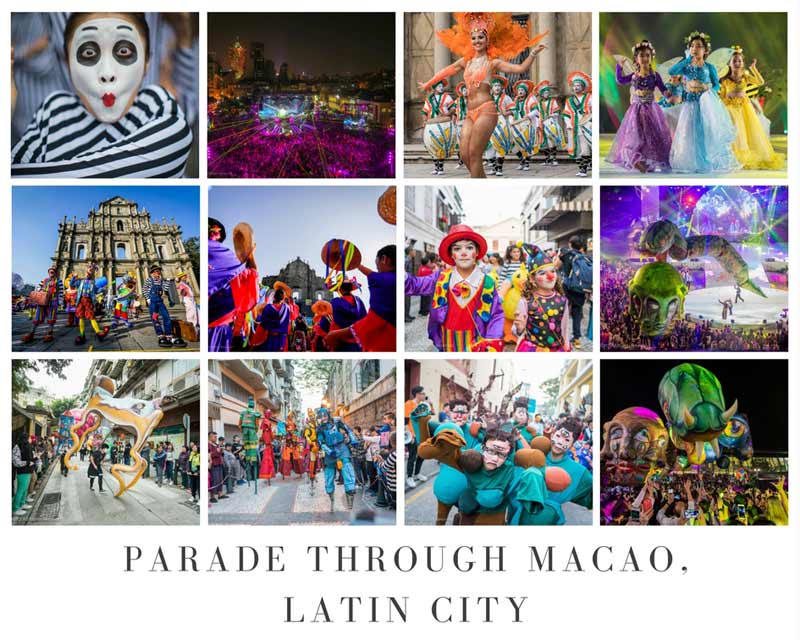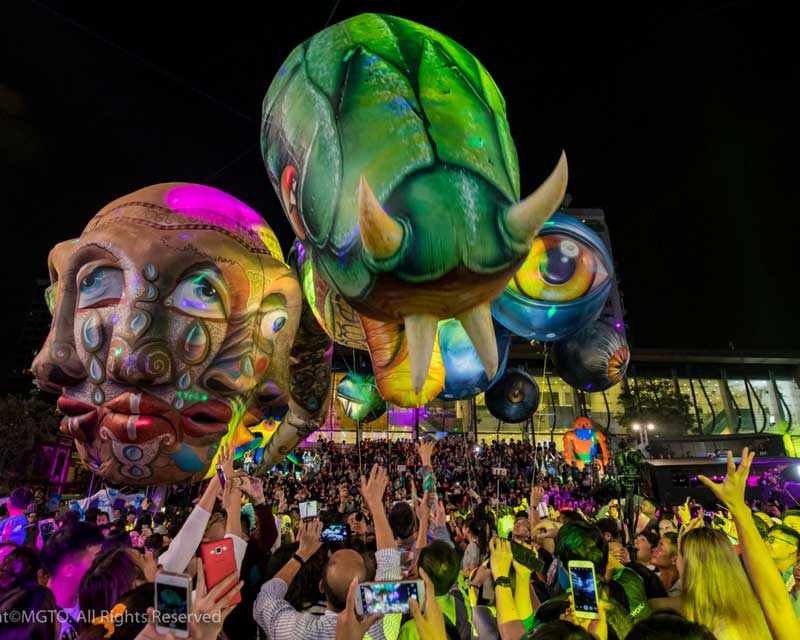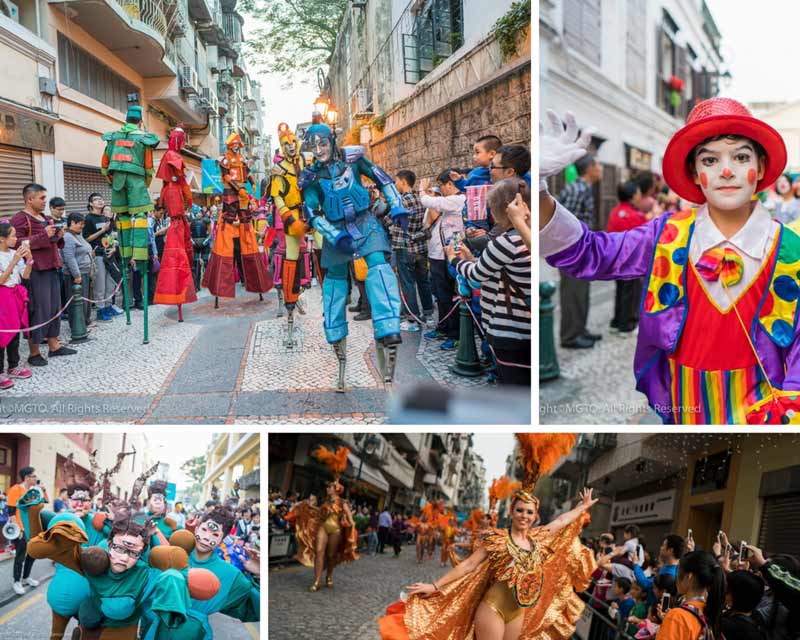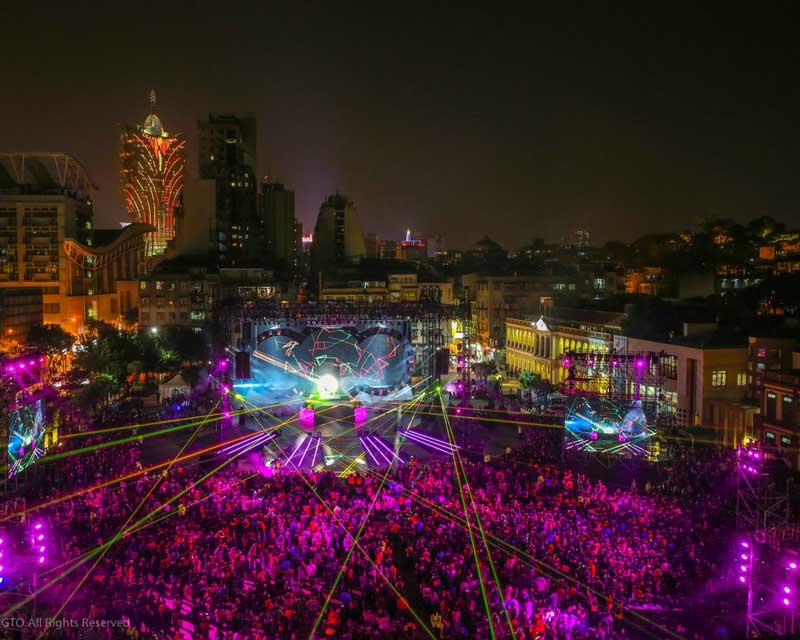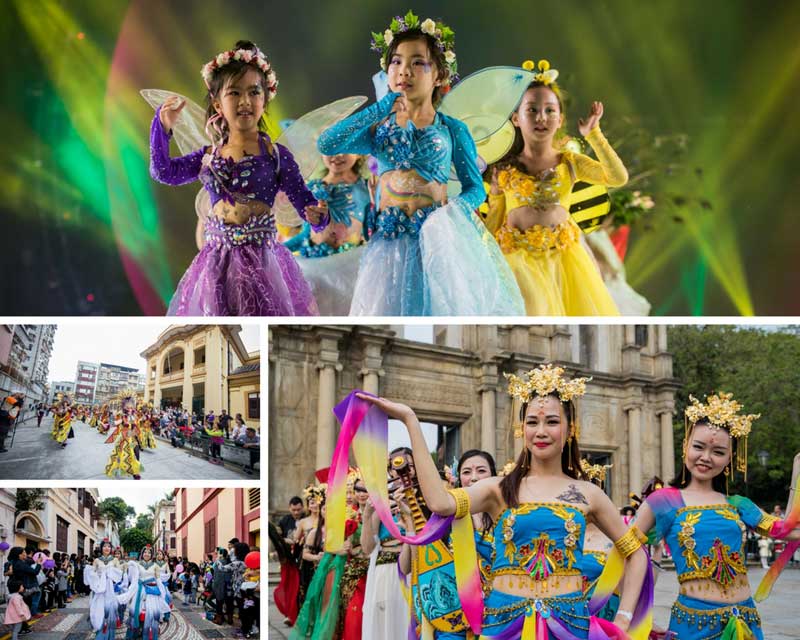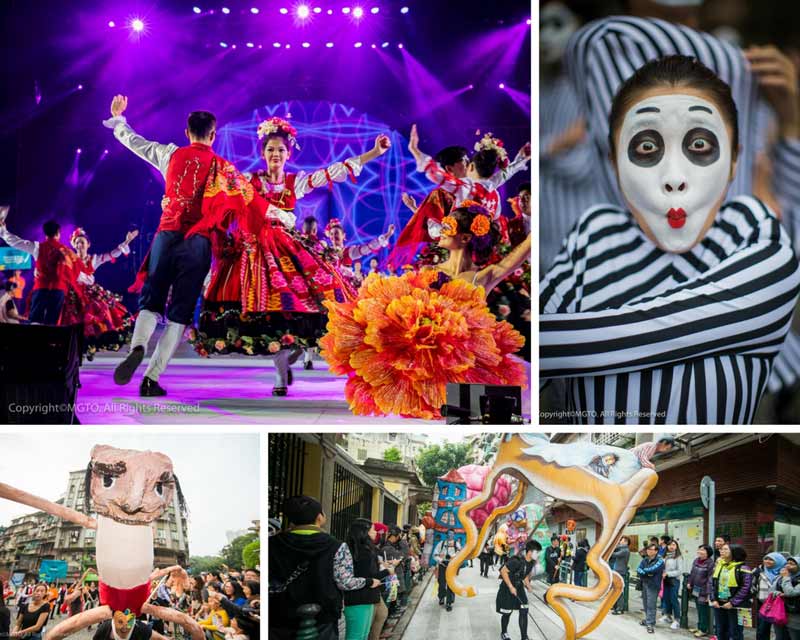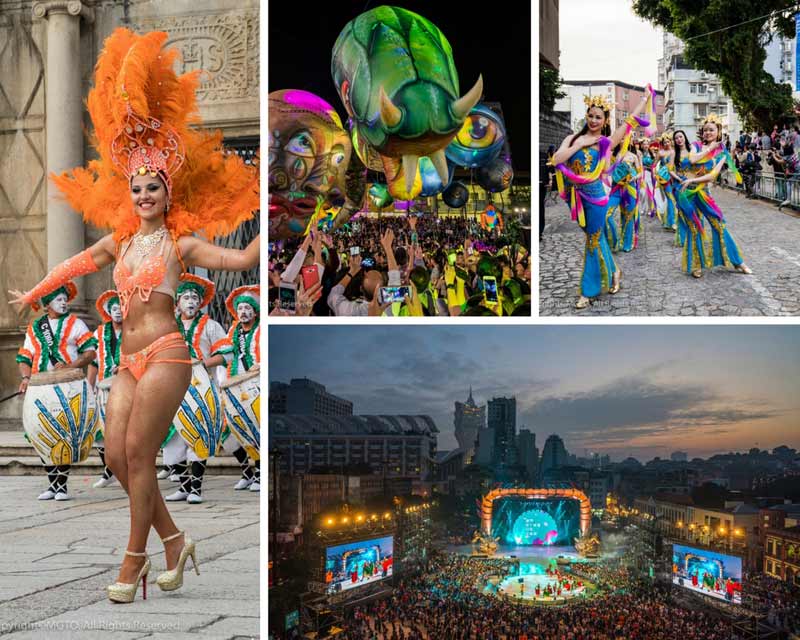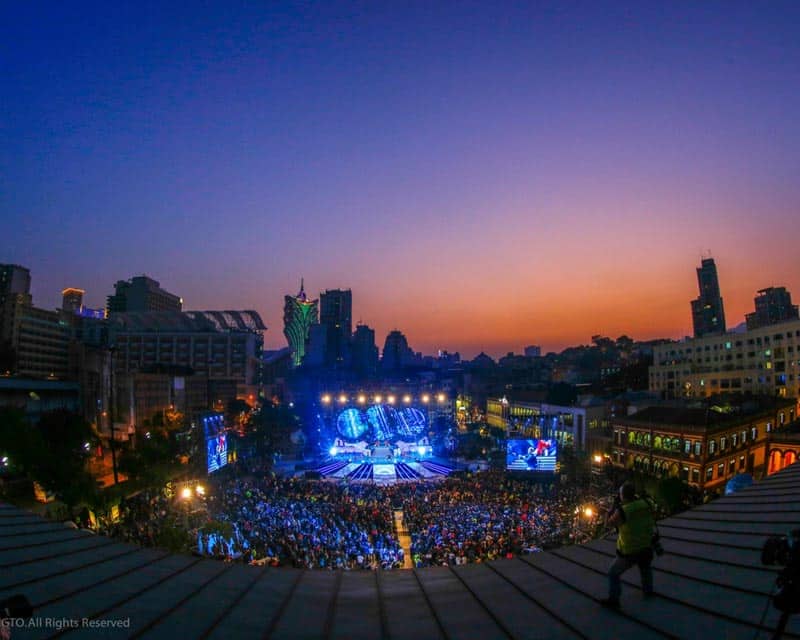When it comes to outdoor events, few cities do it better than Macao. Witness the Macao Grand Prix that thunders through the streets and the phantasmagorical fireworks festival that illuminates the night sky with a million Technicolor asterisks. Just as thrilling, just as spectacular, and just as noisy, the Macao International Parade is a sure-fire crowd-pleaser that wends its way around the best places to visit in Macau. The historic quarters of downtown Macao in a riot of multinational music, fun and colour.
Held in December to mark Macao’s return to Chinese sovereignty in 1999, the parade is truly cosmopolitan, with artists from all over the world joining Macanese and Mainland performers to celebrate just about everything under the sun – art, freedom, Christmas, New Year and the sheer joy of dancing in the street.
Macao’s history
Settled in the 16th century by Portuguese traders, Macao has enjoyed a long and colourful history, acting as one of the earliest points of exchange between East and West.
Visiting during the parade is not only a fun thing to do in Macau, it’s a way to understand Macau’s fascinating history.
European architecture, culture, religion, cuisine, and tradition are still strongly evident in what is very much a Chinese city.
So the Macao International Parade is as much about Macao today as it is about its international antecedents.
Some 1,500 performers make up the body of the parade each year, and thousands flock to line the route and catch a glimpse of action, some travelling from as far away as Hong Kong and across the boundary in Guangdong Province.
The Parade
The parade high-kicks off on the steps of Macao’s architectural icon, the ruins of St Paul’s, a church built by Jesuits in the first half of the 17th century, but destroyed by fire in a typhoon in 1835.
From St Paul’s, the parade snakes its way downhill into the heart of the city, before turning sharply to the right at Largo de Santo Antonio and then making its way along Rua de D Belchior Carneiro.
Another long stretch along Rua do Tap Seac leads to the wide open square of the same name, marking a triumphant end to a very long chorus line.
Around 60 different groups take part in the parade, with Macanese performers making up the lion’s share.
Multicultural Macao
Just about any organisation is welcome to take part in the parade: the Macao Chinese Orchestra has often made a major contribution, as has the Macao Youth Symphony Orchestra.
Both the city’s Filipino and Indian communities are represented, with the Santo Nino de Cebu Association and Indian Cultural Association members strutting their stuff.
The parade is revved up by overseas troupes, who make the journey from Europe and South America to add more than a soupcon of authentic Latin spice.
Portuguese, French, Italian, Spanish, Chilean, Mexican, Colombian and Peruvian artistes take their places and kick up their heels in what must be one of the merriest outdoor festivals in the whole of Asia.
World Culture in Macao
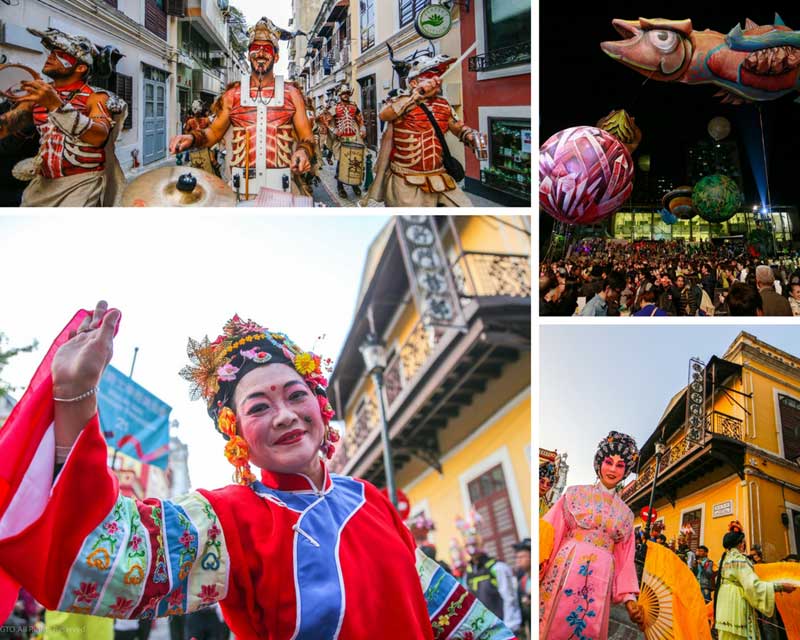
“We usually opt for a Chinese style of dance,” commented the group’s Art Director, Regina Kuok.
“One year the dance we chose was used by the State of Chu in sacrificial rituals in ancient times, in line with our characteristics as a traditional dance group. Our students, and even the audiences, were all very excited by the performance.”
Kuok added that the students who dance in the parade are usually in their mid-teens, and get as much of a kick out of performing in public as the spectators do from watching them.
“In the past we hired professional choreographers from Italy to arrange dances, and our members learned a lot from them,” said Kuok.
“For other parades, we have resorted to free creation and that turned out pretty well too. But we may pull in overseas talents again in the future so that our students can interact more with dancers from other places.”
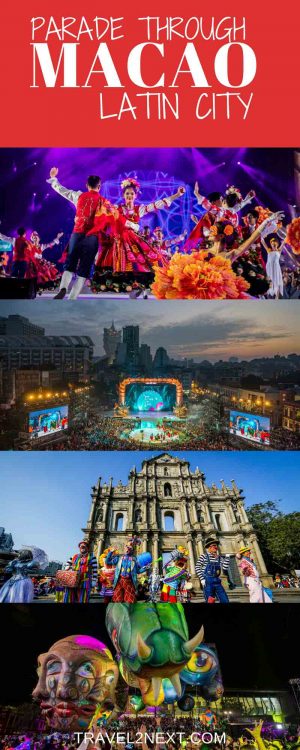
Discover Macao
Throughout the year, visitors with a penchant for history can get an in-depth sense of Macao via the city’s excellent museums.
The Macao Museum, a short walk from St Paul’s, is the obvious place to start, but the Maritime Museum provides an equally good snapshot of the city – especially as the sea has played such an enormous role in its development.
The Wine Museum addresses two other important facets of life in Macao, while the Fire Services Museum should appeal to seven-year-olds of all ages. And strolling around the quintet of Taipa Houses – originally built as private residences for well-to-do merchants – gives a good idea of what life must have been like in Macao around a century ago. Taipa Village has undergone a revival and is one of Macau’s coolest hotspots.
Admission to many museums is free, and even when an entrance fee is charged the most expensive is 15 patacas.
Plan your Macao trip around this colourful parade or one of these amazing festivals. For more details about Macao International Parade go here.
Plan Your Trip

Rent A Car – Find the best car rental rates at Discover Cars. They compare car hire companies to provide you with the best deal right now.

Find A Hotel – If you’re curious about this article and are looking for somewhere to stay, take a look at these amazing hotels.
